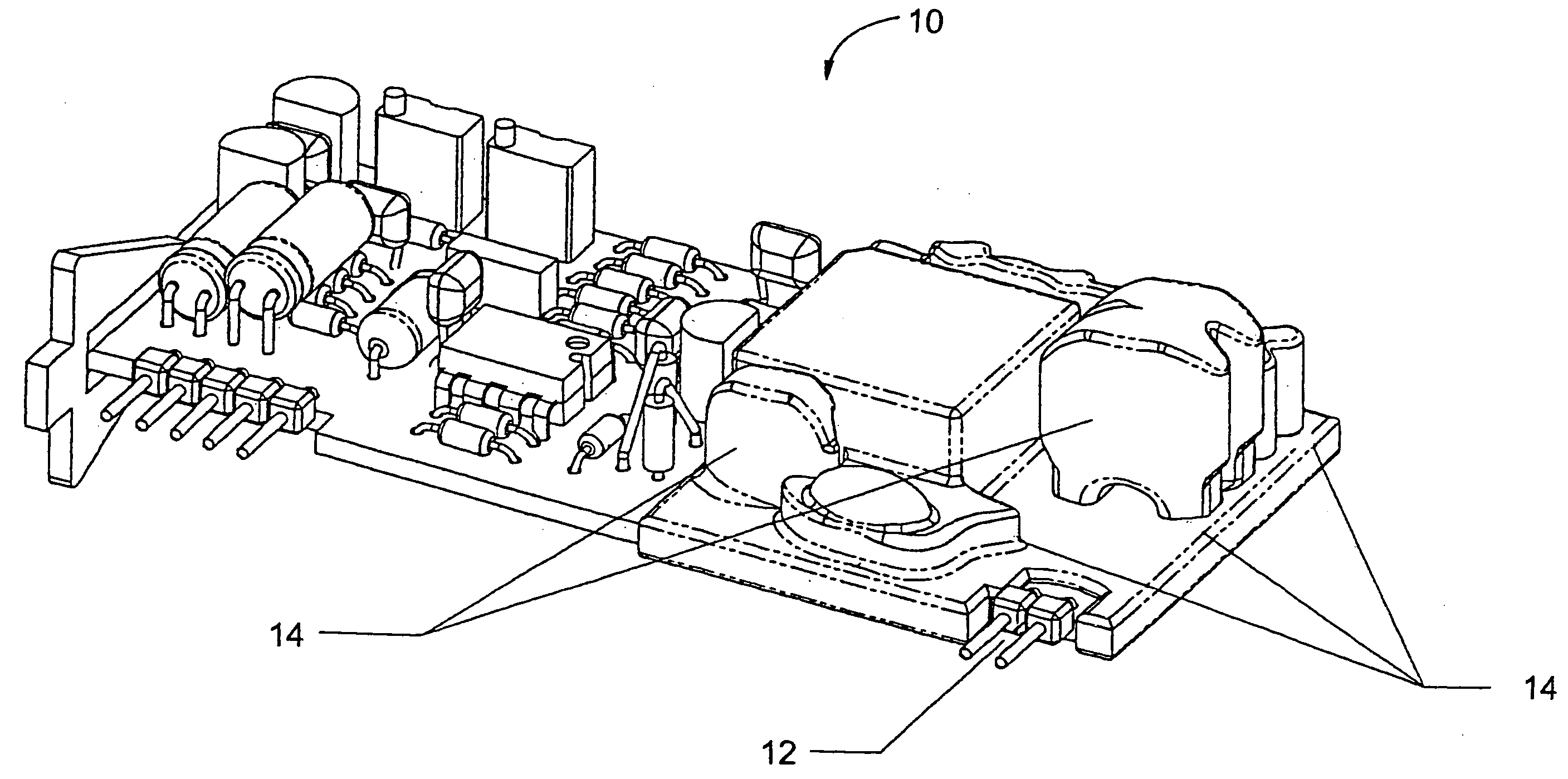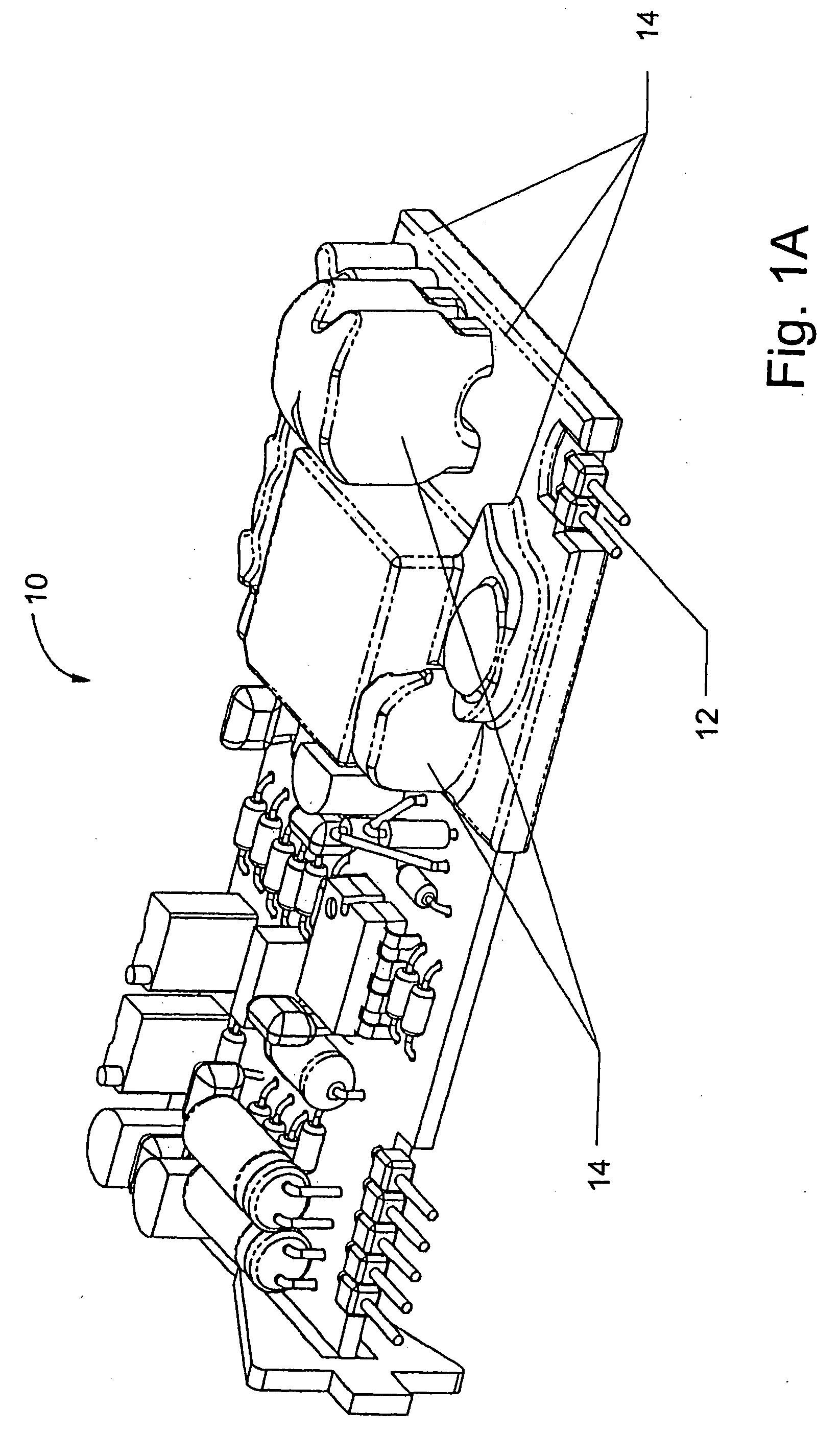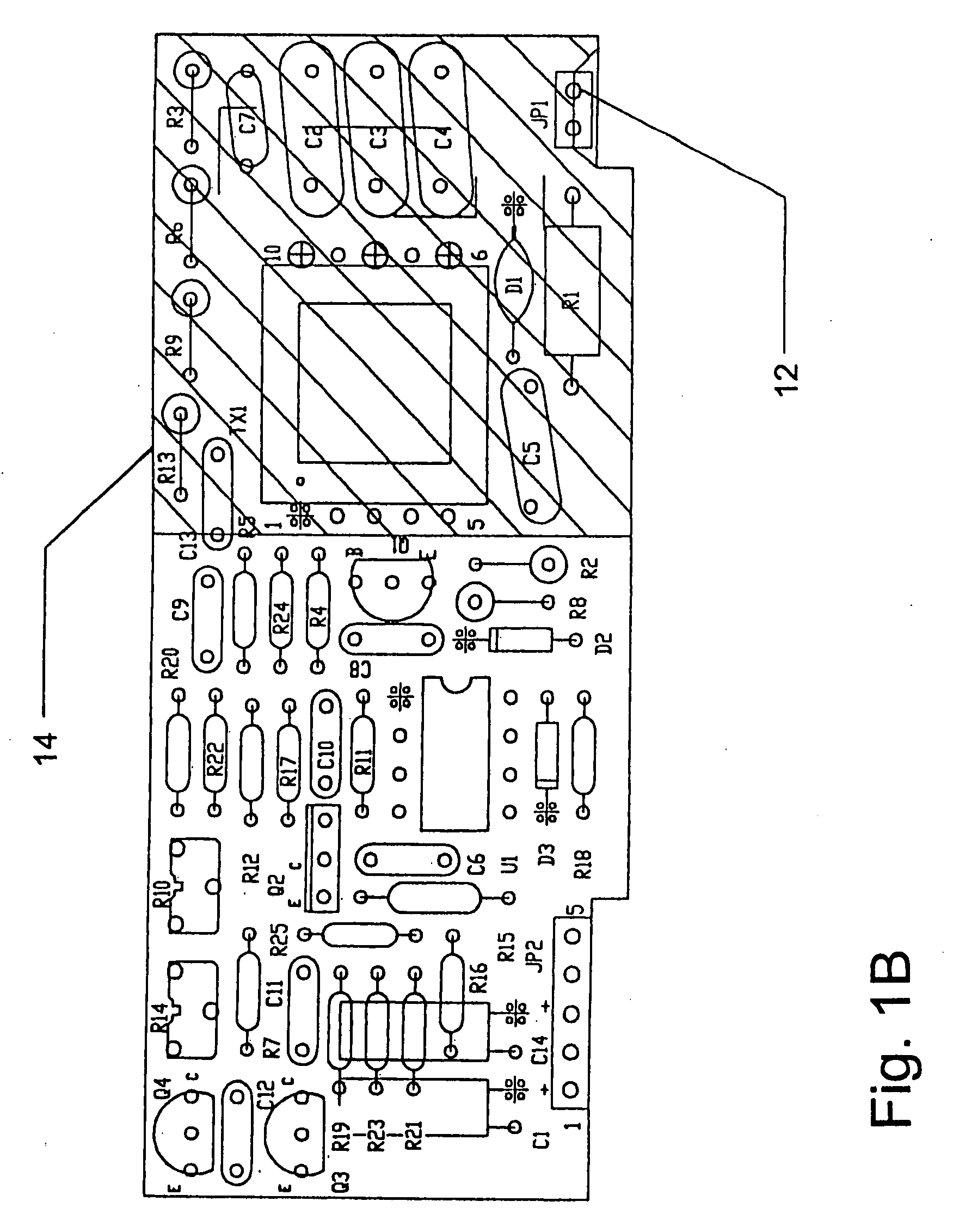Selective Encapsulation of Electronic Components
a technology of electronic components and encapsulation, which is applied in the direction of printed circuit aspects, sustainable manufacturing/processing, final product manufacturing, etc., can solve the problems of difficult to precisely control the perimeter within which the resin will reside, the relatively uncontrolled process, and the inability to provide a uniform encapsulation of the component, so as to reduce the heat exposure of the components, reduce the time of process, and reduce the requirement of materials
- Summary
- Abstract
- Description
- Claims
- Application Information
AI Technical Summary
Benefits of technology
Problems solved by technology
Method used
Image
Examples
first embodiment
[0033] The steps comprised in the invention are summarized in FIG. 2. In the first step, a PCB is delivered to an encapsulating nest in a room temperature environment, preferably with an automated delivery line.
[0034] In the second step, the target areas of the board are surrounded by a dam, which may encircle entire portions of the board, individual components on the board, or even portions of individual components, if it is desired to leave portions of certain components non-encapsulated after processing.
[0035] The dam comprises a resin (typically, an epoxy resin) of a thixotropy such to enable an easy yet accurate resin placement, and to maintain the resin in place during processing, thereby avoiding resin run-offs. The dam resin may be a system of two chemical components that are mixed in situ, wherein one component is a base resin and the second component is a curing agent, or is preferably a pre-mixed resin delivered as a mono-component system. In either case, the curing agen...
second embodiment
[0048] In the second embodiment, a substrate 18 is delivered to an encapsulating nest at room temperature, and a resin bead 20, such as an epoxy bead, is laid in a position preferably transverse in relation to a target electronic component 22, for instance, in a direction that is perpendicular to component 22 and preferably bisects a line drawn between the PCB contact pads or through-holes. One skilled in the art will recognize that the size of bead 20 will be determined according to the size of the component to be placed.
[0049] The resin beads not only act as primary dielectric barriers, but also aid component retention during assembly. As an additional benefit, the beads further reduce potential entrapments of gases within the fill resin.
[0050] After bead deposition and component placement, the components are soldered, and the components are encapsulated as in the first embodiment.
[0051] Turning now to FIGS. 4, 5A, and 5B, there is shown the practice of the second embodiment of ...
PUM
| Property | Measurement | Unit |
|---|---|---|
| voltage | aaaaa | aaaaa |
| temperature | aaaaa | aaaaa |
| electrical insulation | aaaaa | aaaaa |
Abstract
Description
Claims
Application Information
 Login to View More
Login to View More - R&D
- Intellectual Property
- Life Sciences
- Materials
- Tech Scout
- Unparalleled Data Quality
- Higher Quality Content
- 60% Fewer Hallucinations
Browse by: Latest US Patents, China's latest patents, Technical Efficacy Thesaurus, Application Domain, Technology Topic, Popular Technical Reports.
© 2025 PatSnap. All rights reserved.Legal|Privacy policy|Modern Slavery Act Transparency Statement|Sitemap|About US| Contact US: help@patsnap.com



